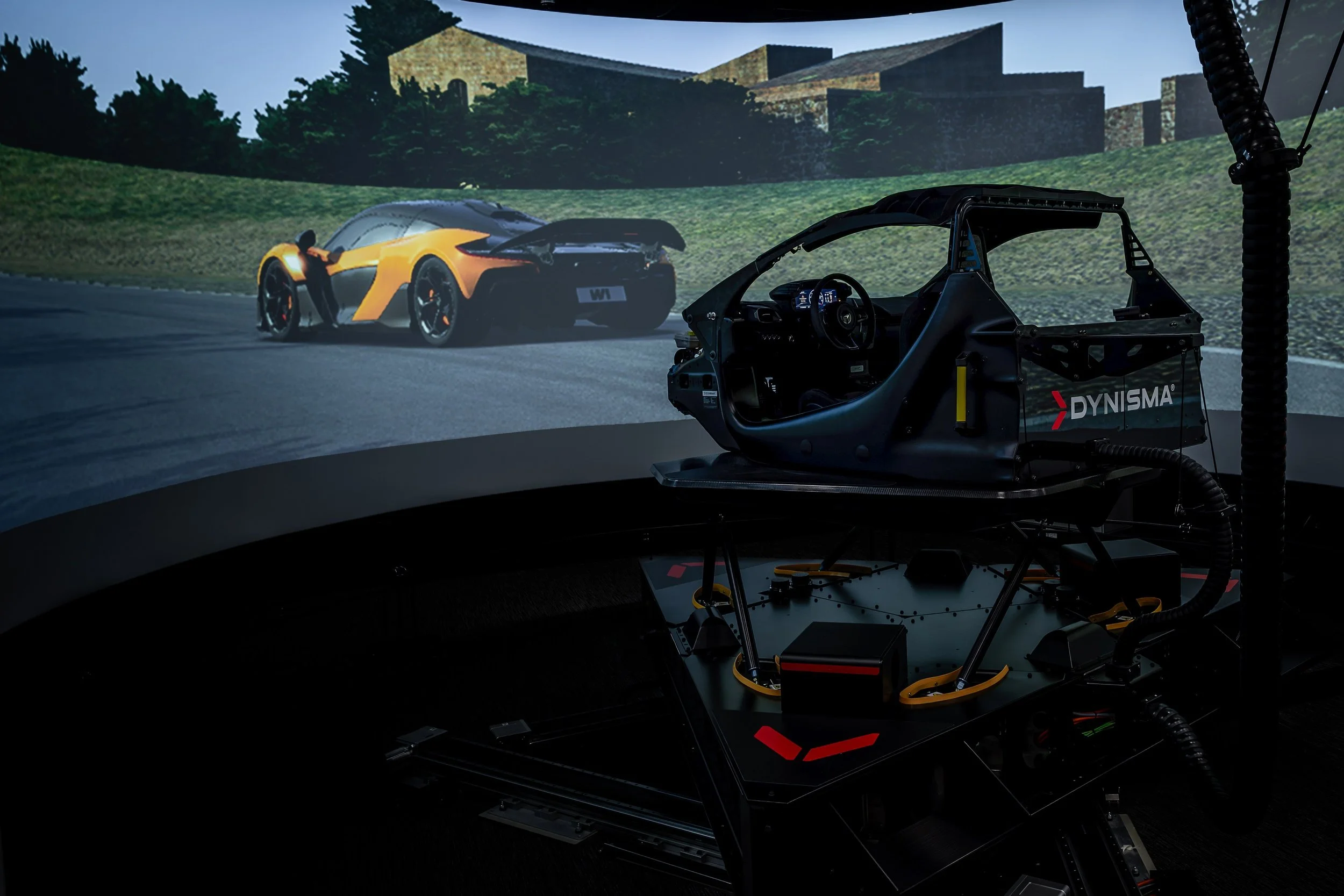McLaren Enhances Virtual Development with State-of-the-Art Dynisma Motion Generator™ Simulator
Woking, UK – McLaren Automotive has taken a major leap forward in vehicle development with the installation of a Dynisma Motion Generator™ (DMG™) at its world-renowned McLaren Technology Centre (MTC). The new simulator introduces Formula 1-level virtual testing capabilities for McLaren’s road cars, revolutionizing how the brand designs, validates, and refines its high-performance vehicles.
A New Era of Virtual Engineering
The Dynisma Motion Generator™ enables McLaren’s engineers and test drivers to experience a virtual environment of unprecedented realism. Its ultra-low latency and high motion bandwidth provide seamless feedback that mirrors real-world dynamics, allowing engineers to analyze performance variables with surgical precision.
By combining virtual and physical testing, McLaren can now “close the loop” on vehicle development faster and more efficiently—accelerating innovation from computer-aided design (CAD) to prototype evaluation.
Emmanuele Raveglia, Chief Vehicle Programme Officer at McLaren Automotive, explained:
“The accuracy of the Dynisma Motion Simulator allows us to extract a new level of detail from virtual development. The fidelity of road texture and ride inputs is so precise that we can simulate both everyday driving and high-load track scenarios with remarkable realism.”
Formula 1-Grade Simulation for Road Cars
The Dynisma system allows McLaren’s test drivers to replicate any driving scenario—from tight city corners to high-speed circuit runs—within a controlled environment. Engineers can now observe the exact data behind every vehicle behavior, gaining deeper insight into why a McLaren performs the way it does.
This Formula 1-style process enhances the understanding of aerodynamic, suspension, and steering interactions—crucial to delivering McLaren’s signature feel of agility and precision.






Image source: newspress.uk
Supporting the Development of the McLaren W1
The first model to benefit from DMG™ technology is the upcoming McLaren W1, a next-generation supercar that represents the brand’s most advanced performance platform yet.
The DMG™ played a central role in developing the W1’s active aerodynamic systems, suspension tuning, and control logic, validating these systems in a virtual environment before real-world testing began. This hybridized development approach shortened lead times and improved design integration, paving the way for faster product evolution across future McLaren models.
Inside the McLaren Automotive Simulator Development Program
Source: McLaren Automotive Youtube
From Wind Tunnel to Simulator: Integrated Development
The new DMG™ seamlessly connects with McLaren’s existing development tools, from Computational Fluid Dynamics (CFD) and wind tunnel testing to full aero mapping. Engineers can now measure downforce and airflow behavior in real time, bridging the gap between laboratory insight and on-road performance.
This integration allows McLaren to validate aerodynamic improvements virtually before implementing physical prototypes—cutting costs, time, and environmental impact while enhancing precision.
Conclusion
With the installation of the Dynisma Motion Generator™, McLaren enters a new phase of virtual vehicle development, combining advanced simulation technology with decades of motorsport expertise. The result is faster innovation, deeper insight, and the continued evolution of what defines a McLaren: a visceral, data-driven connection between car and driver.

